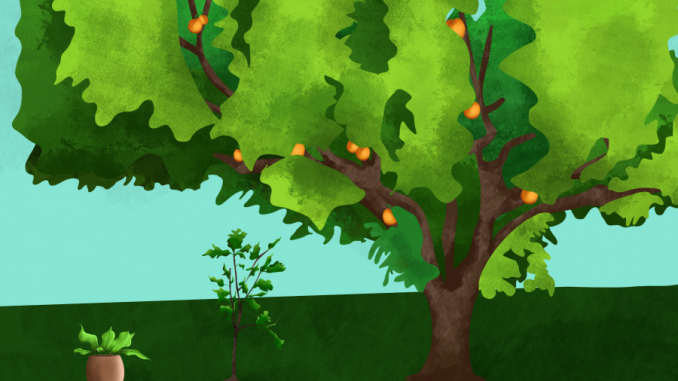
Growing up, Mark Leuchter’s Tu Bishvat celebration did not extend much beyond eating a pomegranate. Although he does not commemorate the holiday through elaborate festivities, Leuchter finds its history interesting.
“There’s actually a prehistory to it,” said Leuchter, a religion professor and director of Jewish studies. “There was a really strong connection between the idea of the landscape and the concept of divine myth.”
Tu Bishvat began around 100 C.E., when legislation in the Bible instructed people to eat fruit from a tree five years after it was planted, Leuchter said. People struggled to keep track of the exact date they planted their trees, so the rabbi said the 15th of Shevat should be the day people count from.
This year, the holiday begins on the evening of Jan. 27 and ends on the evening of Jan. 28. While some Temple University students commemorate Tu Bishvat by planting trees or having Seders, others don’t celebrate the holiday.
Hannah Roach’s favorite part of the holiday is the food. This year, she plans to celebrate Tu Bishvat by making recipes with her favorite foods, like apricots, almonds and dates that are associated with the holiday.
“As with many other Jewish holidays, food plays an important part of the symbolism of the day,” wrote Roach, a second-year medical student, in an email to The Temple News.
Growing up, Roach used to honor the day by planting different flowers and herbs when she attended Hebrew school at her congregation, Larchmont Temple in Larchmont, New York. They would also do a lot of singing, she wrote.
To Roach, Tu Bishvat is the celebration of the natural world, in particular the trees.
“Trees are important in many cultures, in many ways,” Roach wrote. “We refer to the Torah as the tree of life, trees give us food, resources and the air we breathe. So to me, it is about appreciating the world around us and working to protect it.”
Asher Mandel also celebrated Tu Bishvat at Abraham Joshua Heschel School in New York, New York. There, they would have some form of education and celebration to appreciate nature and nature’s bounty, he said.
However, Mandel, a second-year medical student, has not celebrated Tu Bishvat since he was 18.
“I haven’t really celebrated it in many years because Judaism has a lot of holidays and that’s not one of the major ones,” Mandel said.
According to Mandel, the holiday is more cultural and traditional than it is religious.
While it was once a way to keep track of trees’ ages, the Tu Bishvat traditions changed over time, Leuchter said.
During the creation of the holiday, many Jewish people were farmers. In the years following its creation, they were often unable to own land and were required to move from place to place. The situation for Jewish people had changed and, as a result, these traditions began to adapt to their new circumstances, Leuchter said.
In recent years, Tu Bishvat has gained importance in Israel, Leuchter said.
“You know when you plant a tree, you’re also claiming land to a certain degree, and if it’s not clear who owns the land, then planting of the tree can become a very political thing,” he said.
Beck Macey, a senior media studies and production major, has also not celebrated Tu Bishvat in many years.
“Since I was 16 my views on Israel have changed a lot,” they said. “Becoming more connected to a holiday that’s mainly celebrated there is definitely something that didn’t happen.”
Macey feels a strong connection with nature. While they don’t contribute the connection to Tu Bishvat, they definitely believe that it’s related to being Jewish.
“There is a central value in Judaism called ‘Tikkun Olam’ which translates to, ‘The repair of the world,’” Roach wrote.
“Environmental justice is very in line with this Jewish value — we want to not just preserve the world but repair,” she added. “What I love about this notion of repairing the world is that it means the work is never done.”


Be the first to comment